The joy of finally purchasing a house, a place to call your own, is unparalleled.
However, besides the excitement, keeping a keen eye on certain physical aspects of the potential home is crucial. Ensuring the structural integrity, checking for any signs of pest infestations, examining the roof’s condition, and verifying the plumbing and electrical systems are all in working order are paramount.
These considerations guarantee the safety and longevity of your investment and ensure that your dream home doesn’t become an unexpected headache down the line.
Among all these selection factors, an initial pest inspection is of utmost importance, as pests can lead to health concerns, structural damages, and additional costs in the future.
Controlling pests is so important for your health and safety; wondering why? Read This Article.
Some signs indicate your house might be a habitat for insects and pests. Here in this article, we will discuss 8 common indicators of possible pest infestation that you should consider when planning to buy a residential or commercial property.
What Is a Pest Infestation?
Simply said, a pest infestation is when unwanted animals, like bugs or rodents, are present in a place in big numbers, causing problems or discomfort.
In other words, a pest infestation occurs when unwanted organisms, often small animals or insects, invade a particular environment in large numbers. These invaders can be anything from ants, cockroaches, and termites to mice, rats, or even larger wildlife.
What Are the Signs of Pest Infestation?
When selecting a house, being aware of potential signs of pest activity is crucial to avoid future issues. Here are some indicators you should never miss if you think of a potential pest or insect infestation in your house or business property:
- Visible pests or their remains.
- Droppings or urine trails.
- Physical property damage.
- Nesting materials.
- Unusual sounds or odors.
- Damage to plants or garden.
- Trails and tracks.
- Sheddings and egg casings.
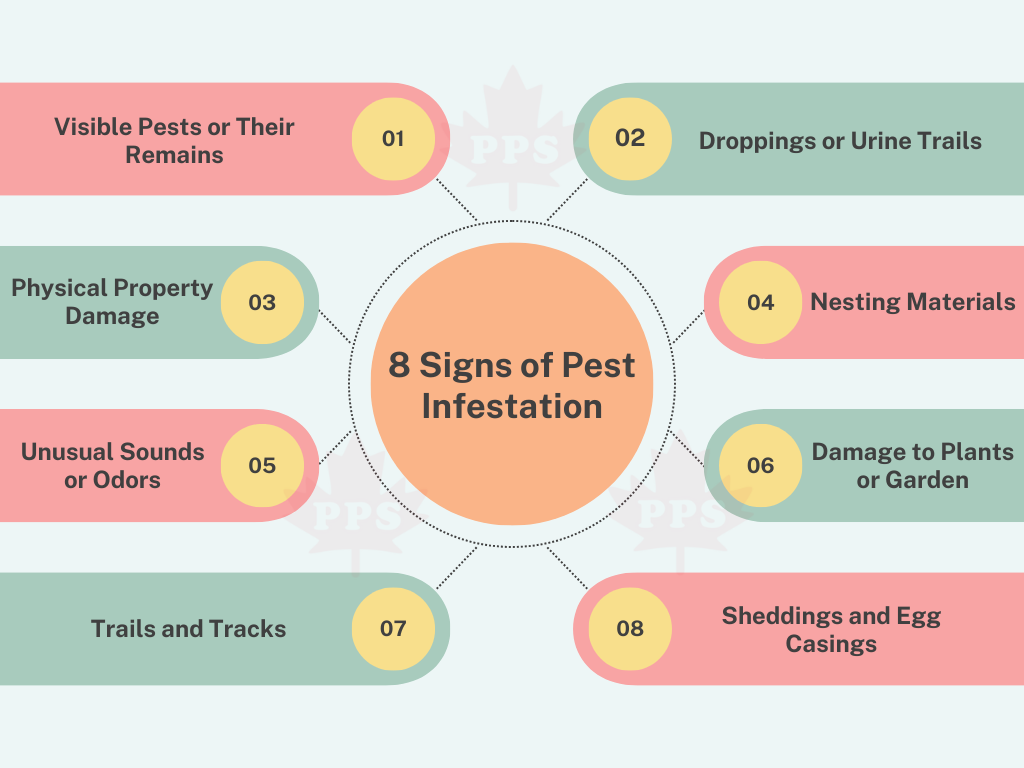
Each sign of potential pest infestation will be discussed in detail below.
Presence of Live or Dead Pests
Finding live pests in your home or property is an immediate and obvious sign of an infestation. It suggests that the environment is conducive for these pests to thrive, reproduce, and establish a colony.
On the other hand, the presence of dead pests can also be concerning. While it might indicate that some pests have met their end, it also proves that pests have been or currently are active in the area. Whether they died naturally, due to pest control efforts, or because of some environmental factor, seeing dead pests is a sign that there’s a habitat nearby that’s attracting them.
In both cases, it’s crucial to take note of the kind of pests you’re seeing, as this can give you clues about the nature of the infestation and the steps needed to address it.
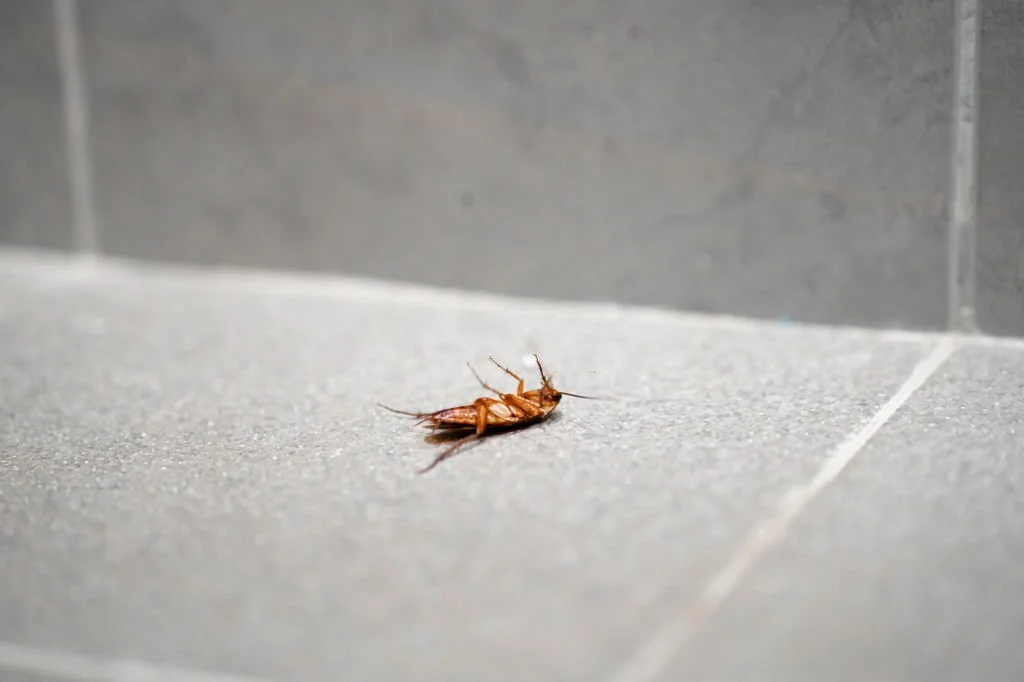
Droppings And Urine Stains
Pests leave behind droppings and urine. The presence of these waste materials indicates that pests are active in the area. Depending on the size, shape, and color of the droppings, one can often identify the specific pest causing the issue. For instance, mouse droppings are small and pellet-like, while cockroach droppings appear like black pepper.
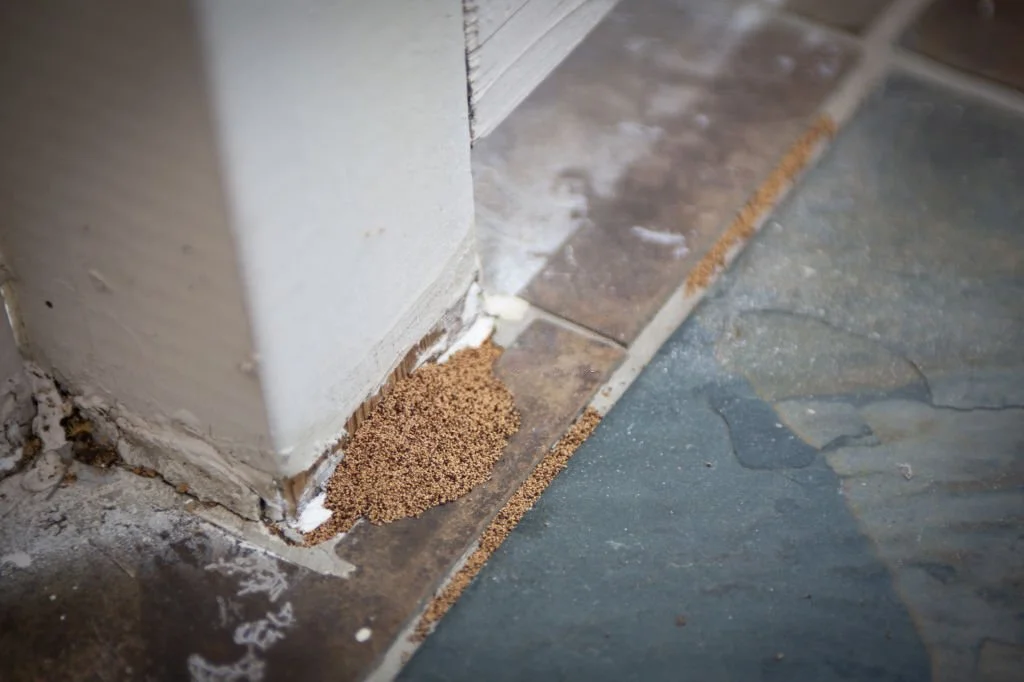
Urine stains, particularly from rodents, can be more challenging to spot with the naked eye, but they often leave a distinct odor. In some cases, under ultraviolet light, these stains can glow, making them easier to detect.
Physical Damage to Property
Property physical damage as a sign of pest infestation refers to the harm pests can cause to the structural components of a home, personal belongings, or plants in a garden.
This damage can manifest in various ways. For instance, termites might weaken wooden structures, while moths could chew through fabrics.
In gardens, pests can leave behind chewed leaves or damaged fruits. Rodents might gnaw on electrical wires, posing a fire hazard or causing appliances to malfunction.
The presence of such damages often indicates an ongoing infestation, making it crucial to address the issue promptly to prevent further deterioration or risks.
Nesting Materials or Nests
The presence of nesting materials or nests in a property indicates that pests have not only invaded but have also established a residence.
This can mean that the infestation is more settled and may be more challenging to remove.
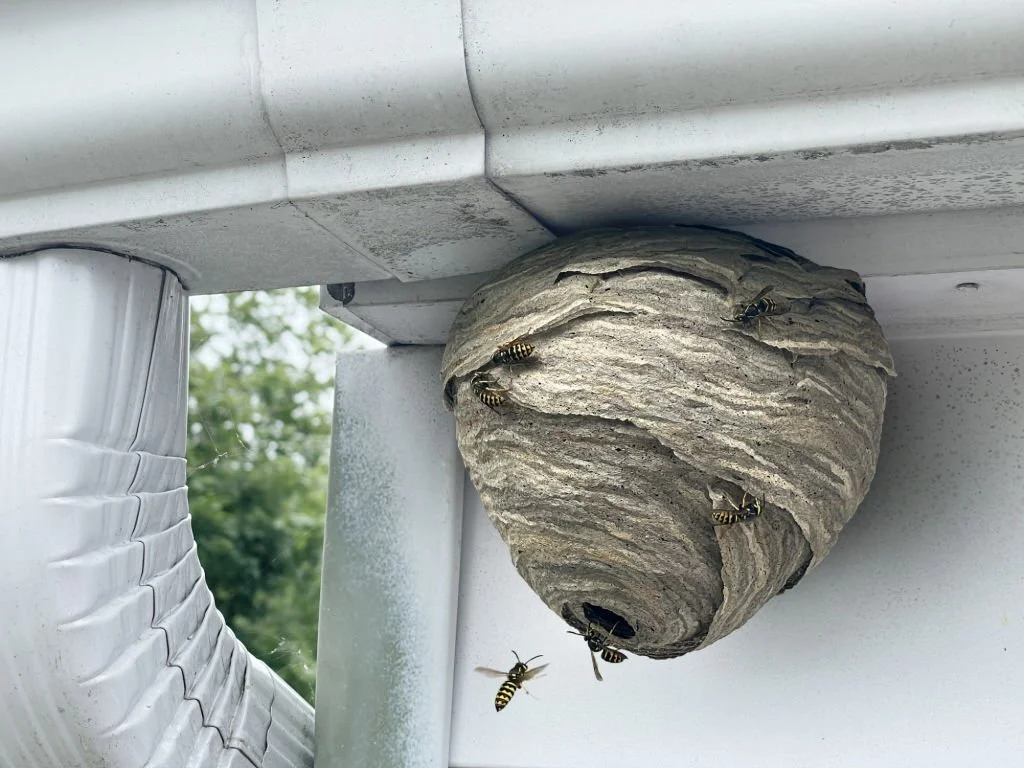
Pests, like rodents or certain insects, gather materials such as shredded paper, fabric, or plant matter to build nests where they can reproduce and thrive.
Finding these nests or stray materials typically implies an active or recent presence of pests. It’s vital to recognize these signs early on because a nesting population can grow rapidly, intensifying the infestation and making remediation more complicated.
Odd Smells and Noises
Unsual odors and sounds often indicate the unseen presence or activities of pests within a property.
For instance, a musty or ammonia-like smell can be a sign of rodent urine, while the smell of rotting flesh could suggest dead pests in hidden areas.
Certain pests, like mice or rats, are nocturnal and may produce scratching or scurrying noises in walls or ceilings, especially during the night.
Cockroaches and other insects might give off an oily or musty odor when in large numbers.
These unusual sounds and scents can be disturbing, but they are essential clues, alerting homeowners to hidden pest activities.
Damage to Plants
Plants and garden damage as a sign of pest infestation highlights the detrimental impact that pests can have on vegetation, both indoors and outdoors.
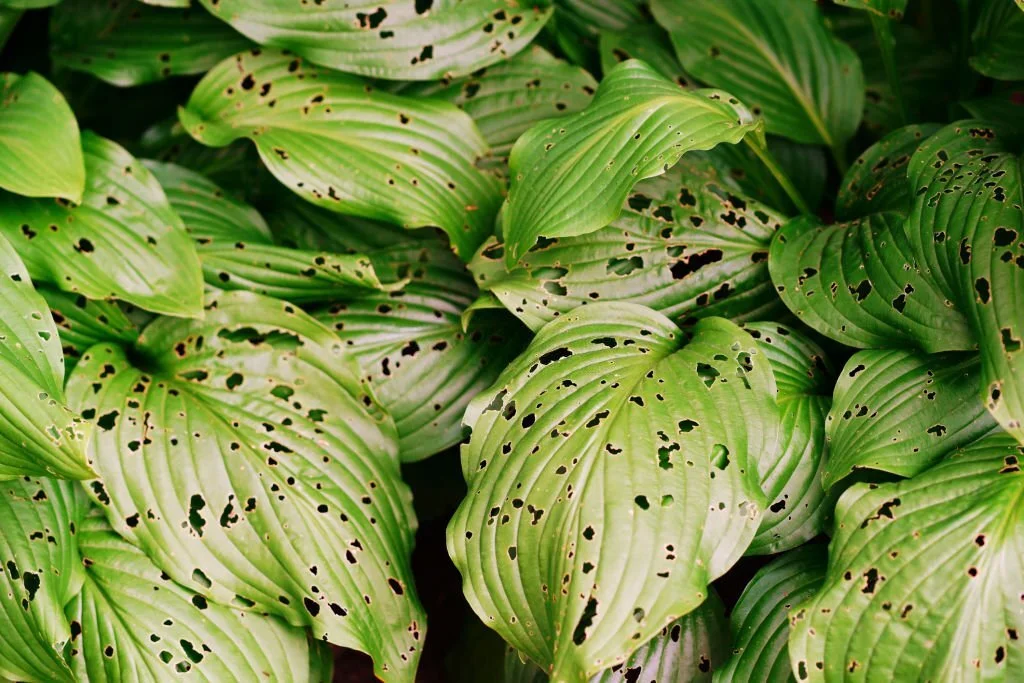
Certain pests, like aphids, caterpillars, and beetles, feed directly on plants, stripping them of their leaves, fruits, or even burrowing into their stems. This not only weakens the plant but can also stunt its growth or kill it over time.
Furthermore, some pests might not damage the plant directly but can introduce diseases or viruses, exacerbating the problem. Spotting unusual holes, wilting, discoloration, or a decline in plant health can be a clear indicator that pests are present and causing harm to your garden or indoor plants.
Grease Marks or Tracks
Pests, especially rodents like rats and mice, leave behind tracks or grease marks due to the oil in their fur.
This oily trail often collects dirt and grime, making it more visible over time. These marks are particularly common along frequently traveled routes or near entry and exit points the rodents use.
If you notice such marks, especially in conjunction with other signs of rodent activity, it’s a strong indicator that there might be an infestation in the premises.
Exoskeletons or Egg Casings
As pests like insects grow, they shed their exoskeletons. Many insects, such as cockroaches and bed bugs, shed their exoskeletons (outer protective covering) as they mature through their life stages. When they outgrow their current exoskeleton, they molt, leaving behind a shell that’s often a clear sign of their presence.
Similarly, egg casings are protective shells that house the offspring of certain pests. Once the eggs hatch, these casings are discarded, often in the same areas where the pests are active.
Finding these exoskeletons or egg casings in your home or property can be a clear indication of an ongoing or potential infestation.
These remnants are often found in areas where the pests are most active or where they seek shelter and reproduce.
What Should You Do If You See Signs of a Pest Infestation?
When faced with a pest infestation, deciding between a DIY approach and hiring a professional pest control company comes down to several considerations:
Severity of the Infestation: A minor issue, like a handful of ants, may be addressed with DIY methods. However, for larger or recurring infestations, professional intervention is advised.
Type of Pest: Some pests, like termites or bed bugs, are particularly tough to eliminate without specialized knowledge and tools. DIY methods might not be effective against them.
Safety Concerns: Many pests can transmit diseases. Moreover, some DIY treatments involve chemicals that can be harmful if misused. Professionals are trained to handle these issues safely.
Cost Considerations: While DIY might seem cost-effective initially, an ineffective treatment can lead to the problem escalating, costing more in the long run. Professionals, although sometimes more expensive upfront, can offer guarantees and might save you money over time by resolving the issue effectively.
Peace of Mind: Professionals possess the expertise to identify the root of the problem, employ effective solutions, and provide recommendations to prevent future infestations.
In conclusion, for small, straightforward issues, DIY can be a starting point. But for more complex or severe infestations, or for peace of mind, hiring a pest control company is a wise investment.
